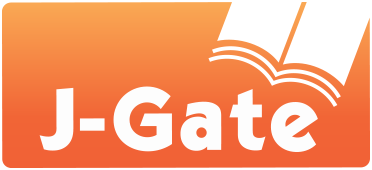Exploring Synchronous Learning during COVID-19 Pandemic: Taiwan EFL College Learners’ Motivation and Learning Experience
DOI:
https://doi.org/10.54855/acoj.221351Keywords:
synchronous learning, learning motivation, EFL learnersAbstract
The purpose of this study was twofold: first, to explore Taiwan EFL college learners' motivation for synchronous learning, and second, to differences between gender groups in their synchronous learning motivation during the time of the COVID-19 pandemic. A total of 96 undergraduate learners from northern Taiwan took part in the study. All the participants were required to participate in 4 different types of online activities: synchronous learning, online discussion, group oral presentation, and submission of e-assignments. Quantitative and qualitative data were collected, including a motivation questionnaire and learners' essay writing. According to the findings, their overall motivation was positive. Nevertheless, male learners had significantly less confidence in their online performance and less acceptance of this kind of interaction. This study highlights not only the crucial role of motivation in synchronous learning acceptance and engagement but also the importance of gender differences, self-regulation, social interaction, and self-efficacy for effective online learning.
References
Agung, A. S., & Surtikanti, M. W. (2020). Students’ perception of online learning during COVID-19 pandemic: A case study on the English students of STKIP Pamane Talino. SOSHUM : Jurnal Sosial Dan Humaniora, 10(2), 225–235. https://doi.org/10.31940/soshum.v10i2.1316
Alghamdi, A., Karpinski, A. C., Lepp, A., & Barkley, J. (2020). Online and face-to-face classroom multitasking and academic performance: Moderated mediation with self-efficacy for self-regulated learning and gender. Computers in Human Behavior, 102, 214–222. https://doi.org/10.1016/j.chb.2019.08.018
Archer, W., Garrison, R., & Anderson, T. (1999). Adopting disruptive technologies in traditional universities: Continuing educationeducation as an incubator for Innovation. Canadian Journal of University Continuing Education, 25(1), 13-44 https://doi.org/10.21225/d5z015
Carter,R. A., Rice, M., Yang, S., & Jackson, H. A. (2020). Self-regulated learning in online learning environments: Strategies for remote learning. Information and Learning Sciences, 121(5-6), 311–319. https://doi.org/10.1108/ils-04-2020-0114
Cheng, G. and Chau, J. (2016), Online participation and learning achievement. Br J Educ Technol, 47: 257-278. https://doi.org/10.1111/bjet.12243
Dornyei, Z. (1997). Motivational factors in the second language attainment: A review of research in Hungary. Acta Linguistica Hungraia, 44, 261-275.
Fedynich, L., Bradley, K S., & Bradley, J. (2015). Graduate students’ perceptions of online learning. Research in Higher Education Journal, 27, 1-13.
Fidalgo, P., Thormann, J., Kulyk, O., & Lencastre, J.A. (2020). Students’ perceptions on distance education: A multinational study. International Journal of Educational Technology Higher Education, 17 (1), 1-18. https://doi.org/10.1186/s41239-020-00194-2
George, M.L. (2020). Effective Teaching and Examination Strategies for undergraduate Learning during COVID-19 School Restrictions. Journal of Educational Technology Systems, 49 (1), 23-48. https://doi.org/10.1177/0047239520934017
Graneheim, U. H., & Lundman, B. (2003). Qualitative content analysis in nursing research: Concepts, procedures and measures to achieve trustworthiness. Nursing Education Today, 24, 105–112. https://doi.org/10.1016/j.nedt.2003.10.001
Jacobson, M. J. (2008). A design framework for educational hypermedia systems: Theory, research, and learning emerging scientific conceptual perspectives. Educational Technology Research & Development, 56(1), 5–28.
Jamalpur, B., Kafila, Chythanya, K. R., & Kumar, K. S. (2021). A comprehensive overview of online educationeducation – impact on engineering students during COVID-19. Materials Today: Proceedings. https://doi.org/10.1016/j.matpr.2021.01.749
Jonassen, D. H. (1996). Computers in the classroom: Mindtools for critical thinking. Merrill.
Le, T. T. M. (2021). A Case Study of Students’ Views on Effective Online Learning. AsiaCALL Online Journal, 12(5), 24-33. Retrieved from https://asiacall.info/acoj/index.php/journal/article/view/73
Rovai, A. P., & Baker, J. D. (2005). Gender differences in online learning: Sense of community, perceived learning, and interpersonal interactions. Quarterly Review of Distance Education, 6(1), 31-44.
Veletsianos, G., Kimmons, R., Larsen, R., & Rogers, J. (2021). Temporal flexibility, gender, and online learning completion. Distance Education, 42(1), 22-36. http://dx.doi.org/10.1080/01587919.2020.1869523
Chung, E., Subramaniam, G., & Dass, L. C. (2020). Online learning readiness among university students in Malaysia amidst COVID-19. Asian Journal of University Education, 16(2), 46-58.
Jaradat, S. A., & Ajlouni, A. O. (2020). Social presence and self-efficacy in relation to student satisfaction in online learning setting: A predictive study. International Journal of Education and Practice, 8(4), 759-773.
Chyung, S. Y. (2007). Age and gender differences in online behavior, self-efficacy, and academic performance. Quarterly Review of Distance Education, 8(3), 213-222.
Lowes, S., & Lin, P. (2015). Learning to learn online: Using locus of control to help students become successful online learners. Journal of Online Learning Research, 1(1), 17-48. https://www.learntechlib.org/d/149845
Lowes, S., Lin, P., & Kinghorn, B. R. C. (2016). Gender differences in online high school courses. Online Learning, 20(4), 100-117.
Gonzalez-Gomez, F., Guardiola, J., Rodriguez, O. M., & Alonso, M. A. M. (2012). Gender differences in E-learning satisfaction. Computers & Education, 58(1), 283-290. http://dx.doi.org/10.1016/j.compedu.2011.08.017
Hannum, W. (2001) Web-based training: advantages and limitations, in: B. H. Khan (Ed.) Web-based training (Englewood Cliffs, NJ, Educational Technology Publications), 13–20.
Harvey, H. L., Parahoo, S., & Santally, M. (2017). Should gender differences be considered when assessing student satisfaction in the online learning environment for millennials? Higher Education Quarterly, 71(2), 141–158. https://doi.org/10.1111/hequ.12116
Hung, J., Hsu, Y., & Rice, K. (2012). Integrating data mining in program evaluation of K–12 online education. Educational Technology & Society, 15(3), 27–41.
Hung, M., Chou, C., Chen, C., & Own, Z. (2010). Learner readiness for online learning: Scale development and student perceptions. Computers & educationeducation, 55(3), 1080-1090. doi:http://dx.doi.org/10.1016/j.compedu.2010.05.004
Jan, S. K. (2015). The relationships between academic self-efficacy, computer self-efficacy, prior experience, and satisfaction with online learning. American Journal of Distance Education, 29(1), 30-40. doi:http://dx.doi.org/10.1080/08923647.2015.994366
Katsarou, E. (2021). The effects of computer anxiety and self-efficacy on L2 learners' self-perceived digital competence and satisfaction in higher educationeducation. Journal of Education and e-Learning Research, 8(2), 158-172
Kuo, Y., Tseng, H., & Kuo, Y. (2020). Internet self-efficacy, self-regulation, and student performance: African-American adult students in online learning. International Journal on E-Learning, 19(2), 161-180.
Lin, TJ. (2021). Exploring the Differences in Taiwanese University Students’ Online Learning Task Value, Goal Orientation, and Self-Efficacy Before and After the COVID-19 Outbreak. Asia-Pacific Edu Res, 30, 191–203. https://doi.org/10.1007/s40299-021-00553-1
Lumsden, L.S. (1994). Student motivation to learn. ERIC Digest, No. 92. Retrieved on November 14, 2021 from https://eric.ed.gov/?id=ED370200.
Mamattah, R., Selorm (2016). Students’ perceptions of e-Learning. (Master program Adult Learning and Global Change), Linköping University, Linköping.
Mislinawati, V., M., & Nurmasyitah. (2018). Students’ perceptions on the implementation of e-learning: Helpful or unhelpful? Paper presented at the 6th South East Asia Design Research International Conference.
Nistor, N. (2013). Stability of attitudes and participation in online university courses: Gender and location effects. Computers & Education, 68, 284–292.
Oblinger, D., Oblinger, J. L., & Lippincott, J. K. (2005). Educating the next generation. Brockport Bookshelf. 272. http://digitalcommons.brockport.edu/bookshelf/272.
Okoye-Johnson, O. (2011). Does multicultural educationeducation improve students' racial attitudes? Implications for closing the Achievement Gap. Journal of Black Studies, 42(8), 1252–1274. https://doi.org/10.1177/0021934711408901
Santo, S.A. (2006), Relationships between Learning Styles and Online Learning. Performance Improvement Quarterly, 19: 73-88. https://doi.org/10.1111/j.1937-8327.2006.tb00378.x
Sharpe, R., & Benfield, G. (2005). The Student Experience of E-learning in Higher Education: A Review of the Literature. Brookes eJournal of learning and Teaching, 1(3). 1-9.
Tran, T. P., & Nguyen, T. T. A. (2022). Online educationeducation at Saigon University during the COVID-19 pandemic: A survey on non-English major college students’ attitudes towards learning English. AsiaCALL Online Journal, 13(2), 1-20. https://doi.org/10.54855/acoj.221321
Walsh, D., & Downe, S. (2006). Appraising the quality of qualitative research. Midwifery, 22, 108–119. doi:10.1016/j.midw.2005.05.004
Yang S.J., Huang J.C., & Huang A.Y. (2017) MOOCs in Taiwan: The Movement and Experiences. In: Jemni M., Kinshuk, Khribi M. (eds) Open Education: from OERs to MOOCs. Lecture Notes in Educational Technology. Springer, Berlin, Heidelberg. https://doi.org/10.1007/978-3-662-52925-65
Downloads
Published
How to Cite
Issue
Section
License
Copyright (c) 2022 Pei-Ling Yang

This work is licensed under a Creative Commons Attribution 4.0 International License.
License
Authors retain copyright and grant the journal the right of first publication with the work simultaneously licensed under a Creative Commons Attribution 4.0 International License that allows others to share the work with an acknowledgment of the work's authorship and initial publication in this journal.
Authors are able to enter into separate, additional contractual arrangements for the non-exclusive distribution of the journal's published version of the work (e.g., post it to an institutional repository, in a journal or publish it in a book), with an acknowledgment of its initial publication in this journal.
Authors are permitted and encouraged to post their work online (e.g., in institutional repositories or on their website) prior to and during the submission process.
Copyright
The copyright of all articles published in the acoj remains with the Authors, i.e. Authors retain full ownership of their article. Permitted third-party reuse of the open access articles is defined by the applicable Creative Commons (CC) end-user license which is accepted by the Authors upon submission of their paper. All articles in the acoj are published under the CC BY-NC 4.0 license, meaning that end users can freely share an article (i.e. copy and redistribute the material in any medium or format) and adapt it (i.e. remix, transform and build upon the material) on the condition that proper attribution is given (i.e. appropriate credit, a link to the applicable license and an indication if any changes were made; all in such a way that does not suggest that the licensor endorses the user or the use) and the material is only used for non-commercial purposes.











